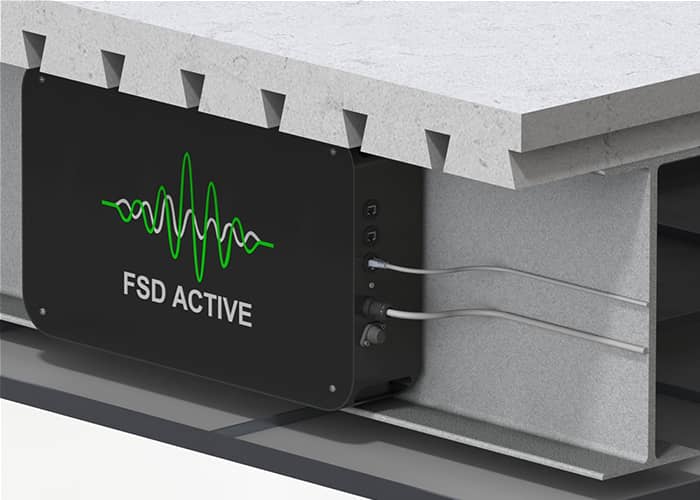FSD Active is an innovative British company that has taken an issue affecting buildings across the world — noise caused by vibrating floors — and come up with an elegant, inventive and advanced solution. With an idea 15 years in the making, the company designed and engineered CALM®FLOOR — a groundbreaking active vibration control device that uses innovative technology, similar to how noise canceling headphones work, to counteract and finely control of vibrations in building floors.
Why did FSD Active come to Newicon?
FSD Active had the hardware in the bag, but they needed something outside of their skillset in order to launch the product. They required a new digital platform that enabled both their customers and their internal teams to access, monitor and manage data and information recorded by the devices installed in their buildings all over the world.
That’s where Newicon came into the picture.
What did Newicon do?
To meet the needs of FSD, we needed to create a portal for both FSD's clients and for FSD's admin team.
And to make this work we needed to also create a secure API, to manage dataflow between Timestream, Google Graphs and Newicon's own tech products. These were Project Bluesky – a cross-platform javascript application and Daedalus – our managed SQL database.
Before any of the building began, however, we completed our Agile Architecture phase. This is the design stage, where – through a series of workshops, design sprints and prototypes – we worked with FSD to define what the project needed, what the users needed and a roadmap for delivery.
The portal(s)
We created two variants of the portal — one for FSD customers and another for the FSD installation/administration team. Each portal is accessed through the same web application — created using Vue JS and using Neon (a platform Newicon created) as a database.
The portals both needed to pull CALM®FLOOR data from Amazon Timestream from AWS, which is what's used to gather the data from the CALM®FLOOR devices. While the data that users input into the portals (company, building and personal data for example) was dealt with by forms we created in Neon.
Once in the portal, the CALM®FLOOR device data was visualised using custom Google Graphs that we created. These graphs were used in both the admin and the customer portal.
In the customer portal the implementation was quite simple, as it is used to show customers information from their device.
In the admin portal it was a bit more complex, as a super-user might need to overlay a lot of data onto one graph, and they may want to see data from multiple devices or buildings.
What were the biggest challenges?
Overall the project ran very smoothly, through design of the UI right through to the build. But some parts were certainly more challenging than others.
The data from Timestream, for example, had to be test data, as it’s a brand new technology that’s yet to be released — so it’s not currently generating real data. There were a few hiccups with the format of the test data, but nothing that couldn’t be resolved.
It was a great lesson in the fact that in a lot of early stage IoT projects, only test data will be available and that it’s important to ensure that this data exactly matches the real life data you’ll eventually generate.
The Timestream data was also raw sensor data, which needed to be given meaning in order to show clear insights. So, with our API and portals, we took that raw data that’s fairly meaningless on its own and turned into into insightful, visualised data.
What are the results?
On budget, we’ve now completed both the client and the admin portal. They look great and have all the functionally the client needs at this stage.
The client — FSD active — has already indicated that we’ll soon start on a phase 2 of the project which will be to create a mobile version of the application as the current version is desktop only.
We can’t wait to see the CALM®FLOOR devices out in the wild, and for people to start using the portals.
Here's a quick video that'll give you an overview of CALM®FLOOR.
